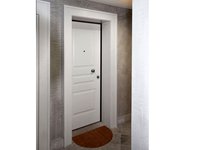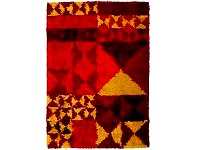180
LED
SPECIFICATIONS
6000K
MacAdam STEP 4 ELIPSE
MacAdam STEP 3 ELIPSE
MacAdam STEP 2 ELIPSE
MacAdam STEP 1 ELIPSE
NOTE
A & B ARE EACH 1 SDCM FROM THE TARGET
BUT 2 SDCM FROM EACH OTHER
C & D ARE EACH 2 SDCM FROM THE TARGET
BUT 4 SDCM FROM EACH OTHER
400
0
20
40
60
80
100
450
650
750
500
550
600
700
Relative radiant Power (%)
Wavelength (nm)
Wavelength (nm)
400
A
B
D
C
0.0
0.2
0.4
0.6
0.8
1.0
1.2
450
650
750
500
550
600
700
800
Relative Intesity
Typical Color Spectrum
6000K
3000K
4000K
At Delta Light®, we follow the evolution in LED at close range. What appears to be similar quality at first sight, can be totally different when looking at some of the underlying characteristics. These
characteristics, like binning, risk factor, thermal management, degradation in luminous flux are part of the DNA of the Light Emitting Diode. These aspects determine the lifespan and the quality of the
LED. For this matter, Delta Light® assures it only selects qualitative LEDs from qualitative manufacturers. High quality design cannot be made without high quality components.
COLOUR BINNING
No 2 LEDs are the same. When LEDs are produced, they vary in light output and in colour temperature, even when they are produced in the same batch. These differences may be small, but they
do influence the quality of the LED. That is why manufacturers sort the LEDs, according to these performances, in different ‘bins’. By reducing the number of bins to choose from, quality increases as
performances are closer to each other.
MACADAM STEP
The differences in colour temperature between LEDs can be measured by looking at the MacAdam ellipses in Standard Deviation of Colour Matching (SDCM), according to the CIE 1931 Standard.
This system looks at the ability of the human eye to perceive colour differences and ranks it on a scale from 0 to 10. Within 1 MacAdam ellipse a colour difference is not noticeable to the human eye
under any condition. From 1 to 3 ellipses it is very difficult for the human eye to notice any difference in colour, meaning that up to 3 MacAdam ellipses all LEDs are very homogeneous when it comes
to colour temperature.
RISK FACTOR
The European standard for photo biological safety EN 62471 describes a measuring method to determine whether a lamp or luminaire carries a risk of eye and skin damage. LED light contains
almost no light from the ultraviolet or infrared spectrum, and therefore is not dangerous to the skin.
It does however provide a high peak in the blue spectrum which, when looking into a bright light source (for a long period of time), may result in irreversible damage to the retina, the so-called the
Blue Light Hazard.
Whether the risk is real, depends on several factors: luminance of the LED, colour temperature, but also light distribution and distance to the luminaire play an important role. When a LED is placed in
a luminaire, it is located behind a lens, reflector or diffuser, thus levelling off the luminance.
To allow users to estimate the risk, the standard EN 62471 determines that lamps and luminaries must be divided into four risk groups:
• Risk group 0 (“exempt” group): this means that there is no danger, even with unlimited viewing of the light source.
• Risk group 1: The risk is limited, no more than 10.000 seconds of viewing is allowed (just under 3 hours).
• Risk group 2: up to 100 seconds of viewing is allowed.
• Risk group 3: up to 0.25 seconds of viewing is allowed. This is shorter than the natural aversion reflex of the eye.
For light sources of risk group 3, protective measures are always needed. For the other groups, it depends on the
application. If the light sources belong in group 2 or 3, then this must be indicated.
LED LIFESPAN LM-80 – TM-21
Conventional light sources mostly burn out before a serious loss of light output is noticeable. As the lifetime of LEDs exceeds the lifetime of conventional light sources, light output degrades over time
before burning out. This degradation in luminous flux can be measured according to the L value and the operating period of time:
• L value shows the percentage of luminous flux regarding the initial luminous flux over a period of time.
• The operating period of time, expressed in hours.
Example: L70 60.000h means that after 60.000 hours the luminous flux will be at least 70% of the original luminous flux.
0%
1000h
10000h
50000h
20%
40%
60%
70%
80%
100%
FLUX
6000K
MacAdam STEP 4 ELIPSE
MacAdam STEP 3 ELIPSE
MacAdam STEP 2 ELIPSE
MacAdam STEP 1 ELIPSE
NOTE
A & B ARE EACH 1 SDCM FROM THE TARGET
BUT 2 SDCM FROM EACH OTHER
C & D ARE EACH 2 SDCM FROM THE TARGET
BUT 4 SDCM FROM EACH OTHER
400
0
20
40
60
80
100
450
650
750
500
550
600
700
Relative radiant Power (%)
Wavelength (nm)
Wavelength (nm)
400
A
B
D
C
0.0
0.2
0.4
0.6
0.8
1.0
1.2
450
650
750
500
550
600
700
800
Relative Intesity
Typical Color Spectrum
6000K
3000K
4000K
All the technical parameters for LED-apply to the entire module.
In view of the complex manufacturing process for light emitting diodes (LED),
the typical values given in this Lighting Bible® are merely
statistical values that do not necessarily correspond to the actual
technical parameters of an individual product;
individual products may vary from the typical values. For most accurate info,
please consult: new.deltalight.com/ledspecs.pdf
All lumen values in this catalogue are related to the Led units.
For more info on the lumen values of the products
please visit our website www.deltalight.com
TM30
Consult our website for more info on R9 values and TM30 details : Fidelity Index (Rf) and Gamut Index (Rg)







